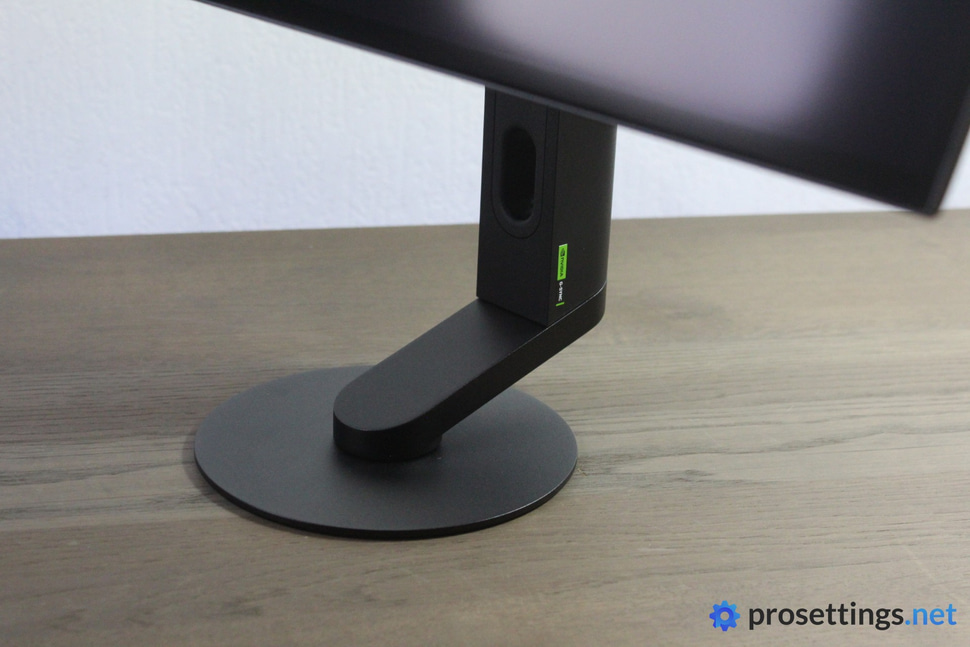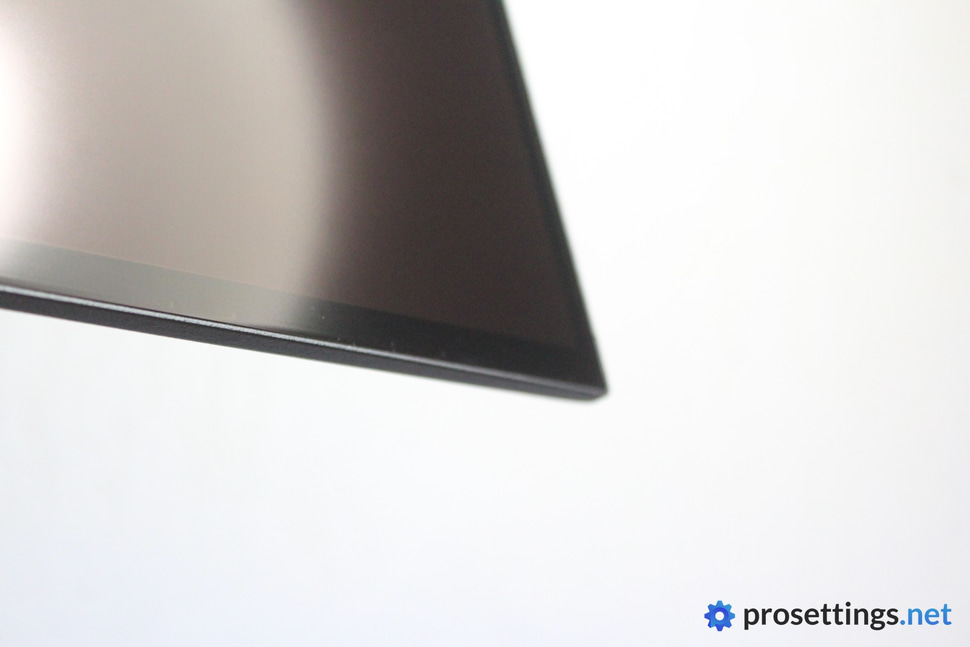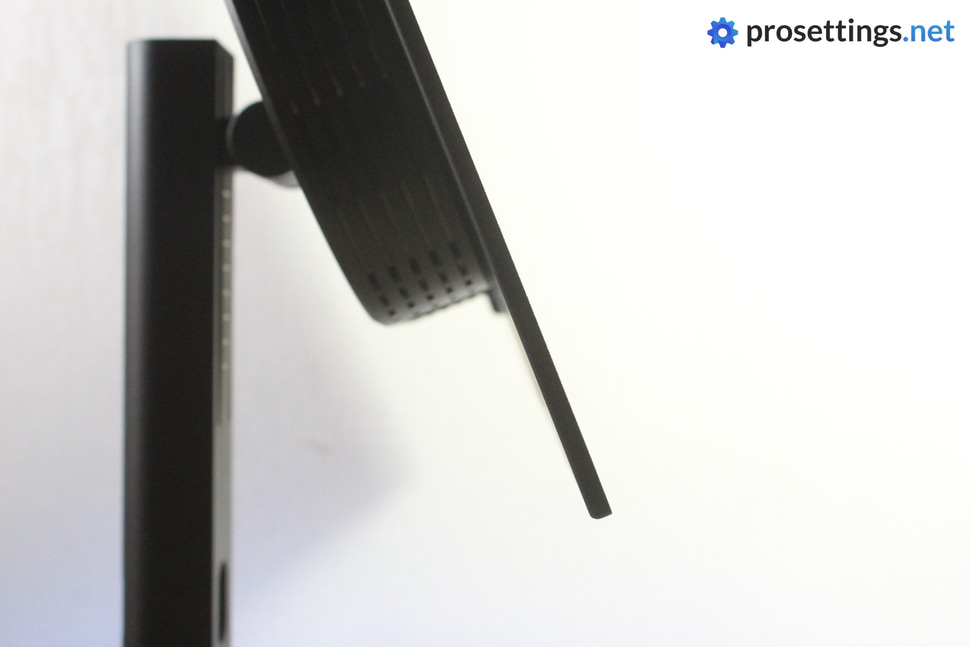Introduction
Sony isn’t exactly the first name you think of when it comes to high-end competitive gaming monitors, but with the INZONE M10S, they’re throwing their hat in the ring. Built in partnership with Fnatic, this monitor is aimed at serious gamers who want to upgrade from a TN panel. This 1440p OLED monitor promises the world, but does it deliver? Read our full Sony INZONE M10s review in order to find out everything you need to know.
At A Glance
SONY INZONE M10S
Used by 29 players ()
-
TenZ

-
Alfajer

-
deko

-
Chronicle

The Sony INZONE M10S is one of the most well-rounded gaming monitors I’ve tested, and it’s one of the best candidates out there if you’re a competitive gamer who doesn’t want to sacrifice image quality.
Pros
- Great gaming performances
- 24.5″ mode is handy for people who want the best of both worlds
- Great image quality and color representation
- Best-in-class stand
- Looks and feels premium
Cons
- Extremely expensive
- Anti-glare coating can sometimes make text etc. look a bit hazy
Specs
| Size | 27″ |
|---|
| Resolution | 2560×1440 |
|---|
| Aspect Ratio | 16:9 |
|---|
| Refresh Rate | 480 |
|---|
| G-Sync | Yes |
|---|
| FreeSync | No |
|---|
| Panel Tech | OLED |
|---|
First Impressions
First impressions start with the packaging. And credit where credit is due: Sony did a fantastic job here. For starters, the big box comes with a carrying handle cutout, which makes transporting the monitor a lot easier. Once you open that box, you’ll be greeted by a very securely packed product. Everything is well-protected and logically laid out, so if you’re someone who is often going places with their monitor, you can repackage this monitor without any worries. Great job here by Sony.
Inside the box, you will find:
- The monitor
- A power adapter + power cord
- A DP Cable
- User documentation (warranty, setup guide, instruction manual)
- An INZONE sticker
- A color calibration report card
The good vibes keep on rolling once you unbox the monitor. This is a super clean product, from the thin panel with small bezels to the absurdly small stand. At first, I thought this stand would be ridiculously wobbly since it’s so small, but that’s not the case. I’ll speak more about the stand later down in the review, but suffice it to say that I’m extremely impressed.
One last thing that immediately catches the attention is the size. This is not an ‘esports standard’ 24.5″ monitor; it’s a 27″ QHD panel. If that sounds like it’s possibly too big to handle, you don’t need to worry, as Sony has included a 24.5″ mode in the panel. More on that later, too.

Build and Operation
Design
One of my biggest pet peeves when it comes to gaming monitors is the stand. So many manufacturers place their monitors on a comically large stand, which not only looks silly but also severely limits desk space. That’s absolutely not the case here. I don’t know what witchcraft is at play here, but this ridiculously small stand not only gives you all the space you need (it’s 159mm in diameter and 4mm thick) but is also incredibly stable. The engineers behind this design deserve a lot of credit, as this is without a doubt the most impressive monitor stand I’ve tested so far.
As far as adjustability goes, you can adjust the tilt, height, and swivel. The stand allows for 360 degrees of rotation, and the stand also comes with height markings, so finding a comfortable and consistent position for the panel is a breeze.
The panel itself also impresses. It’s very thin (save for the back portion which houses the electronics etc.) and has relatively small bezels, so you can pretty much fit this monitor into any setup. With an MSRP of $1,099 (at the time of writing) this isn’t a budget product, but Sony managed to make the overall looks of it live up to the price tag.

Build Quality
The whole monitor assembly looks and feels like it’s finished to a high standard. This is a monitor that you can place in a fancy office without anyone batting an eye, which is more than I can say for most gaming monitors. Of course looks don’t really matter with these performance-focused types of products (at least not in my opinion) but I find it refreshing to see this type of clean and straightforward design.
The metal stand has a blasted finish that matches the textured plastic that’s found on the back of the panel. The panel itself has an anti-glare coating that does a great job at preventing annoying light sources from affecting its performance.
Image Quality and Settings
Picture Quality
Most pro gamers are still on TN panels for performance reasons (more on that under the ‘performance’ header) but there’s no denying that those suffer in the image quality department. And if you’re coming from a TN panel, you’ll step into a whole new world with this OLED monitor.
The colors are rich and vibrant, blacks look fantastic, and there’s a sense of richness and beauty when using this monitor. What’s more is that you don’t even need to tweak it very much in order to enjoy this monitor. The standard mode that this monitor ships with looks pretty great out of the box, so if you don’t want to be messing around with image sliders for hours, you can rest assured.
In case you’re wondering whether or not the jump between the Sony M10S and a top-tier TN panel is noticeable, I can be very short. Yes, it is. Going back to a TN panel (even a good one) after using this is a huge difference, and the TN panel looks drab and washed out in comparison.
I will fully admit that I am not a ‘content monitor’ connoisseur, as most of my experience is with gaming monitors (which prioritize performance over visuals) but I was and still am wildly impressed by how good this panel looks. Everything from gaming to even just browsing looks lively and vibrant, with impressive contrasts and clean transitions.
The aforementioned anti-glare coating also does a great job. Even in my brightly-lit room, I had no issues with reflections or glare during the day. Viewing angles are also very respectable, and the panel can get bright enough to allow you to play in heavily-lit rooms without problems.
If it’s picture quality you’re after in your gaming monitor, this is a top-tier choice.

Settings
The Sony INZONE M10S comes with a bunch of pre-programmed profiles. These all offer a pretty big visual difference, so they’re not just some gimmicky addition that you’ll likely never end up using. I will say that I don’t like how washed-out and dull the FPS Pro+ profile looks, but that’s perhaps a matter of preference. I ended up using the regular FPS Pro profile for the majority of my testing, as that’s much more vibrant.
If you want to customize the image even further, you can do so by using the joystick on the back of the panel or by going into the Sony INZONE Hub. There, you can do deep customization of the panel. You can also enable on-screen crosshairs, enable black equalizer, add an FPS counter, and so on. Sony has seemingly thought of everything here, which is nice.
It doesn’t end there, however. You can set the monitor to automatically switch picture modes depending on which application you’re in, for example. This is incredibly handy since you probably won’t use the same settings for watching Netflix as you do when you’re grinding VALORANT matches.
Finally, the INZONE Hub also supports profile importing and exporting. This means that you can download and instantly apply the profile of your favorite pro, for example. Sony has also mentioned that they’re working on game-specific profiles. This means that, in the (near) future, you’ll be able to download image settings that have been specifically tuned for your favorite game.
If it’s customization you’re after, Sony definitely has you covered. I particularly like the fact that they offer optional software for tweaking the monitor. That’s a lot easier and quicker than endlessly navigating around different on-screen menus.
Performance
Gaming Performance
As I said earlier on in the review, pro gamers are still predominantly on TN panels due to their ultra-fast response times and motion clarity. Given how Sony markets this towards competitive tryhards (I say that lovingly) I was very curious to see how it matched up to today’s top offerings. In short: the Sony INZONE M10s delivers.
It’s not the snappiest and smoothest monitor I’ve ever tried (that’s the ZOWIE XL2586X+) but it’s up there with the very best of the best. If you have a PC that can reliably get close to the 480Hz refresh rate of this monitor, you’re going to get extremely good motion clarity and response times. Even as someone who has used the very best TN monitors out there, I had absolutely no issues using this for my competitive sessions.
The following is probably a personal thing, but what it lacks in motion clarity and ‘snappiness’ versus a top TN panel (and I’m talking about fine margins here), it makes up for with its colors. With the right settings (both ingame and on the monitor itself), you can make enemies and moving objects pop far more than you can on TN panels, which makes them more visible in hectic scenarios. Perhaps that’s something that I will get used to down the line, so this advantage may fade away, but for now I’m really happy with how it performs as a competitive gaming monitor.
Summarizing: the Sony INZONE M10S is a competitive gaming beast. Unless you’re doing a side-by-side comparison or you’ve got thousands of hours of experience in your particular game, you’re probably not going to notice a practical difference between this monitor and a top-tier TN panel.

1440p
If you know the pro gaming scene a bit, you’ll know that pretty much all pros play at 1080p or lower. Knowing this, one could reasonably argue that 1440p is overkill for competitive gaming, and I agree. A regular 1080p display is more than enough to game at professional levels, so you certainly don’t need a 1440p panel to keep up with your enemies on the competitive ladder.
With that said: there’s also nothing wrong with 1440p. Yes, it requires more computing resources, but if your PC can reliably handle that, playing at 1440p isn’t objectively worse. In fact, it could be argued that 1440p is better, since your image is sharper. That can help with identifying enemies and what not. I personally don’t notice any performance improvements with 1440p versus 1080p, but your mileage may vary.
I used this monitor for a variety of games at both 1080p and 1440p, and if you would ask me which is best, I would say that it depends. In games like Overwatch 2, I found myself gravitating towards 1440p. In sweatier titles like CS2, I stayed at 1080p.
What I’m trying to get at here is that it’s good that the option is there. You don’t have to use its full resolution, but if you are someone who likes to play a mixture of games, it’s nice to play the latest eye candy game at 1440p while you go back to 1080p when it’s time to click heads.
27″
Speaking of options: Sony has added a 24.5″ mode to this monitor, too. Activate that, and the edges of the panel turn into black ‘bezels’ while the monitor gives you a 24.5″ panel. You can place that panel in the middle of the screen, or on the bottom (eliminating the bottom bezel). This completes the whole ‘you have options’ idea, as you can easily play CS2 (for example) at your trusted 24.5″ 1080p setup, while you play other games in full 1440p 27″ glory. Switching between the two modes is easy and quick, and I found myself using this feature a whole lot.

Everyday Performance
I love how easy this monitor is to use and the amount of options that you get. The preset modes offer a drastically different visual experience, for instance. The 24.5″ mode is brilliant for competitive players. The INZONE Hub allows you to finely tune your panel (or import other people’s settings) without having to navigate through clusters of menus. I also really like how easy it is to use this monitor and incorporate it into my setup.
I do have one remark about using this monitor for work/productivity purposes, and that’s that the anti-glare coating can make very sharp objects such as text appear a little bit hazy. This isn’t something that really bothered me personally, but if you’re someone who has a ton of experience with high-tier productivity monitors, this might annoy you a bit.
Conclusion
The Sony INZONE M10S is one of the most well-rounded gaming monitors I’ve tested, and it’s one of the best candidates out there if you’re a competitive gamer who doesn’t want to sacrifice image quality.
The monitor balances high-end performance with premium design and genuinely useful features. Whether you’re grinding out ranked matches or just kicking back with a more cinematic experience, this thing handles it all without breaking a sweat. And thanks to the smart implementation of the 24.5″ modes, it’s flexible enough to fit into almost any setup or playstyle. Thanks to this mode, there’s no reason to abandon your trusty competitive setup if you’re upgrading your monitor for browsing and single player gaming.
It’s definitely not the cheapest monitor on the block though. If you’re not a competitive player and you’re mostly casual about your multiplayer experiences, you’re probably better off going for a lower refresh rate 1440p panel, as that’ll save you a lot of money. But if you’re after a clean-looking, competition-ready OLED panel that doesn’t cut corners, the Sony INZONE M10S is absolutely worth a look.
This product was received for free from the manufacturer and given to our reviewer to test and review. Brands and manufacturers have no editorial control over our reviews. For more information, check out our review FAQ.
Former semi-pro gamer turned writer, product reviewer, and community manager.